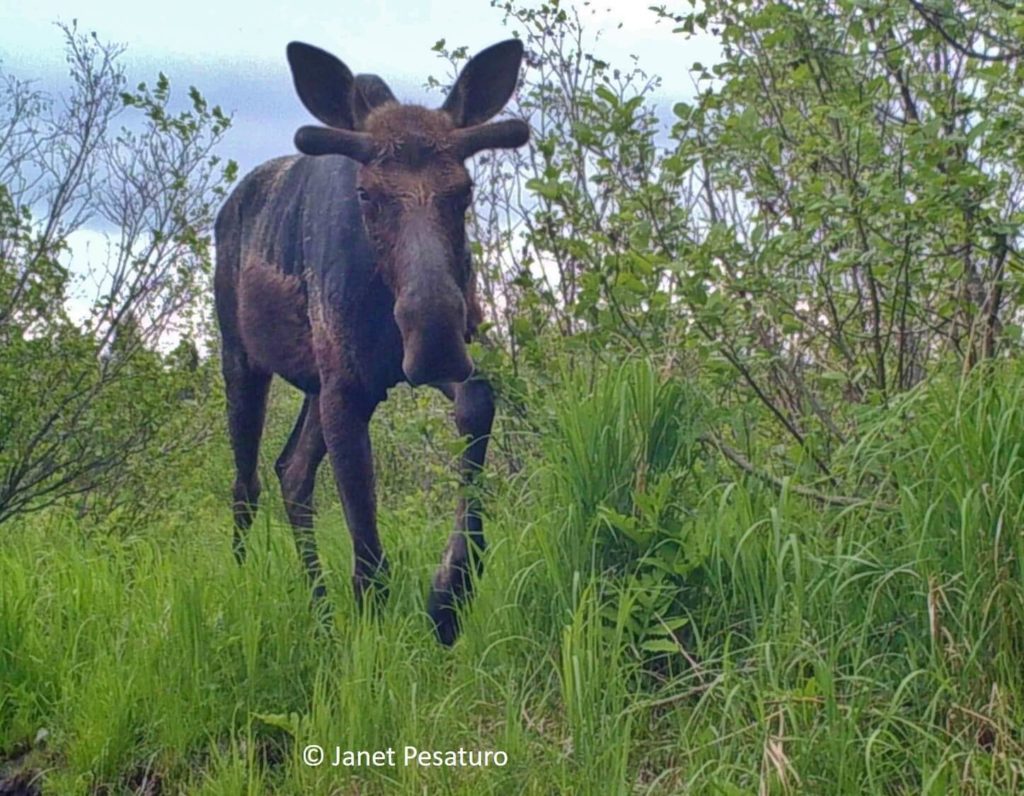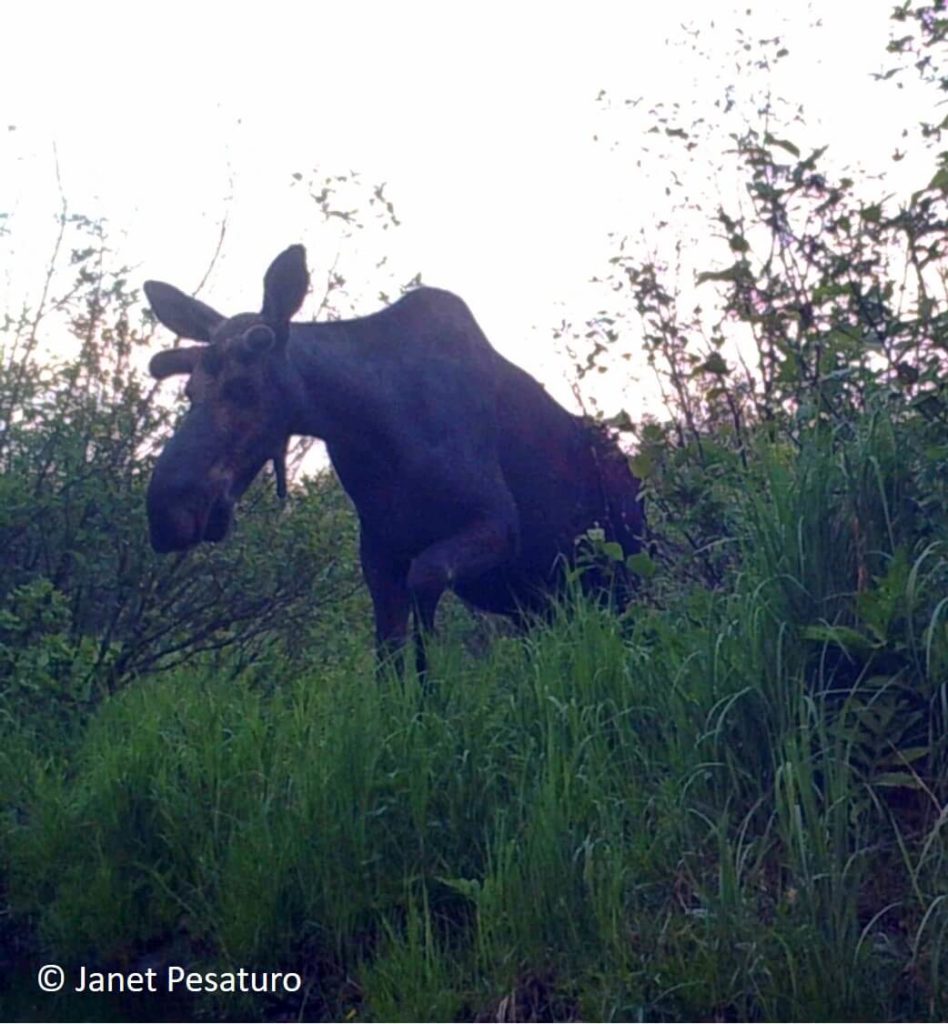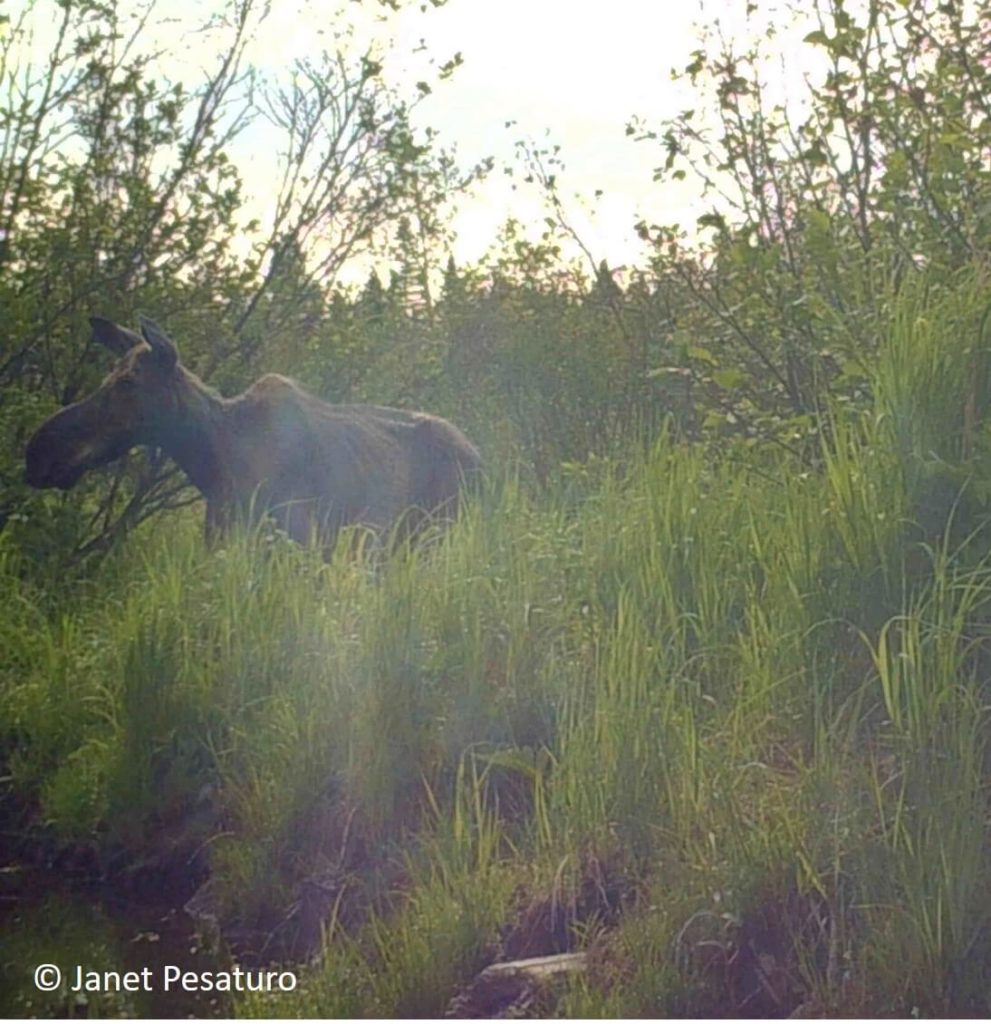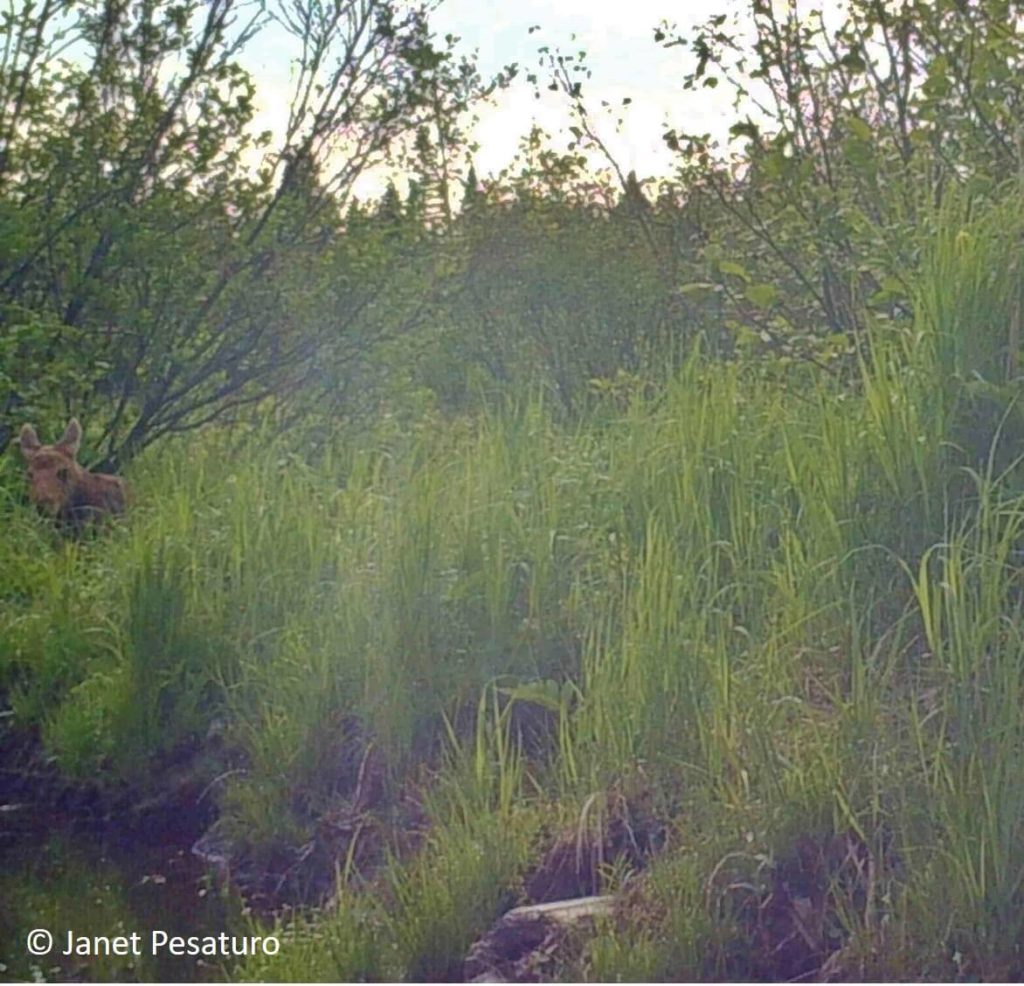Moose’s Summer Diet
We northwoods snow trackers are so used to seeing sign of moose browsing and incisor scraping on tree and shrubs in winter that we forget about the moose’s summer diet. As is true of many herbivores, the moose’s diet varies by season.

A young bull moose at the edge of a beaver wetland in June. (Maine)
Moose’s Summer Diet: Video
By spring, moose have lost weight after months of a poor woody winter diet, and they need to do more than just regain lost weight. Bulls must regrow their antlers, and cows need to begin producing milk for calves. So they eagerly transition to succulent leaves of trees and shrubs, tender forbs, and young grass shoots. But moose need more than calories: they need a source of sodium. In western North America, moose find that in natural salt licks, and in the east and midwest, they get it from aquatic vegetation. Some favorites are water shield, yellow pond lily, and pondweed.
What this seasonal variation in diet means for the camera trapper is that, to capture moose, the camera must be placed in different habitats depending on season. An upland red maple thicket may be a good spot to capture moose action in winter, but in summer, stick with wetlands, ponds and lakes. Large beaver ponds are favorite summer feeding areas, and therefore good sites for moose footage. I set most of my cameras for much smaller animals, so when a moose shows up, I just get a hoof or a nose. But when moose is the target species, the camera must be set way back and way high. In the above video, only the first clip came from a camera set specifically for moose.

This young bull moose was caught by my camera trap at a beaver pond multiple times in June. (Maine)
And, whenever you station a camera during the growing season, be sure to account for growth of vegetation within the camera’s detection zone. It can obscure the target zone and it can trigger the camera as it waves in the wind. It’s no fun to get thousands and thousands of photos triggered by waving grass.

Thus cow moose foraged at the same beaver wetland as the young bull in the previous photos. He is probably her yearling son. A new calf follows her, as you will see in the next photo.

This calf follows moments behind the cow in the previous photo.
Soures:
Botkin, D. B., P. A. Jordan, A. S. Dominski, H. S. Lowendorf and G. E. Hutchinson. “Sodium Dynamics in a Northern Ecosystem.” Proceedings of the National Academy of Sciences, USA. 70 (1973): 2745-2748.
Geist, V. Moose: Behavior, Ecology, and Conservation. Stillwater: Voyageur Press, 1999.

Very nice photo – and moose – assortment, Janet, as well as fascinating info on diet and sodium needs. I was happy to see that your camera placement efforts paid off.
Thanks, Susan!
Imagine – trying to “put on” weight eating leafy greens. Just goes to show the insane imbalance between human animals and our wild cousins. And yet, we want more. 🙁
On a positive note, I’m enjoying your videos. Thanks for sharing!
Yes, it is amazing that such a large animal can make a living on greens and I, too, worry deeply about destroying wildlife habitat. Well, that is the reason for this blog, in a nutshell — to get people interested in wild animals so they will want to be sure we humans provide for them. I’m glad you’re enjoying my videos!